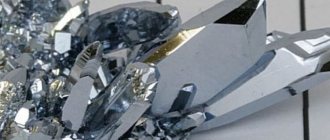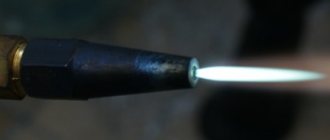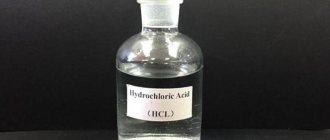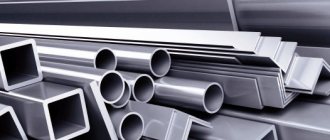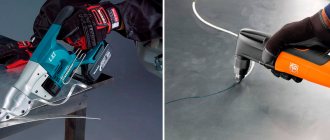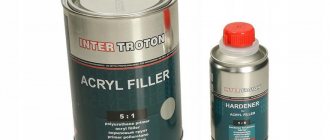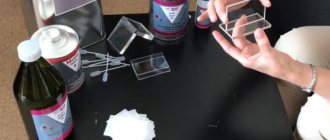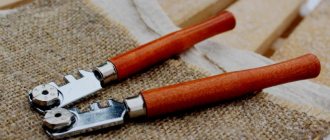| Place | Name | Characteristics in the rating |
| The best superglue for plastic |
| 1 | Permatex Super Glue | Maximum strength |
| 2 | Economy Express Universal | Best price |
| 3 | Superglue POWER | Optimal combination of price and quality |
| 4 | Henkel Super Moment Maxi | The choice of professionals |
| The best waterproof glue for plastic |
| 1 | Moment Plastic | Best Contact Adhesive |
| 2 | Loctite 406 | High bond strength on smooth surfaces |
| 3 | 88 Luxe | Adhesive for large volumes of work |
| 4 | Cosmofen Plus-S | The most popular adhesive for installing plumbing systems |
| The best heat-resistant adhesive for plastic |
| 1 | Rexant glue sticks | The widest color palette |
| 2 | Mastix Poxy Termo | The best two-component glue |
Plastic materials are taking up more and more space in human life. Polymer products are used in everyday life, in production, in cars, etc. Special glue is most often used to connect plastic parts. Users of the older generation have been familiar with it since the times of the USSR, when there was a general passion for assembling plastic airplane models. Today, the domestic market offers a wide range of adhesive compositions. Which one will be best for a particular plastic is difficult to determine without the help of specialists. They advise paying attention to such glue parameters as:
- adhesive strength;
- speed of setting and drying;
- resistance to water, temperature and ultraviolet radiation;
- price;
- ease of application.
Our rating was compiled taking into account the opinion of the expert community and consumer reviews.
How to choose the right glue for plastic
When choosing an adhesive, you need to consider the type of plastic. To do this, each product is marked in the form of a triangle with arrows:
- PETE is the most common polyethylene, a thermoplastic used to make food containers and packaging materials. It is often used in the manufacture of electrical and radio engineering elements and cosmetic containers.
- PVC is plasticized polyvinyl chloride, a universal material used in the production of the vast majority of goods: furniture, building materials, various parts, food containers.
- LDPE is a thermoplastic material that is considered a good thermal insulator. These include tubes, packaging, toys.
- PP is strong, durable, the cheapest polypropylene and is considered the cheapest and most popular plastic. It is used in the manufacture of sewer pipes, automobile parts, and various tools. Excellent resistance to aggressive substances and extreme temperatures.
- Polystyrene PS is a thermoplastic polymer that is resistant to chemicals and moisture. One of the most common types of plastic, used for thermal insulation of furniture, dishes and linings.
- Other and other types of plastics to which various polymer elements are added. Not reusable. It is characterized by high strength.
The tube must be sealed, undamaged, and contain detailed information and instructions. To repair toys, you should purchase a solution based on BF glue.
When choosing an adhesive, you should take into account the material on which the plastic is glued.
When purchasing glue, it is important to consider the material on which the plastic is attached: paper, leather, metal, wood, etc. If the product is intended to be used outdoors or in places with high humidity (kitchen, bathroom, shower), moisture-resistant types are used. When working with contact adhesive, ensure ventilation and ventilation.
One-component and two-component adhesives for plastics have their own markings in the form of letter abbreviations. For example, PPMA (plexiglass), PP (polypropylene), PA 66 (polyamide), etc. For the average consumer, these designations do not have much meaning, since any adhesive for plastics has instructions indicating which types of plastics are suitable for gluing.
Useful tips
Recommendations from experts will help you choose the most suitable composition for gluing aluminum, as well as make the connection of surfaces as high-quality and reliable as possible:
- Aluminum structures can be completely glued together with a two-component composition based on epoxy resin. But if you need to join the surfaces of an alloy that contains aluminum, then it is better to prefer a product containing methyl acrylate.
- For aluminum, only a special composition containing acids and alkalis is suitable. These components ensure the splitting of the oxide film, which significantly improves the adhesion of the adhesive.
- The use of epoxy resin-based adhesives is strictly prohibited if the product will in the future be used to store drinking water or food or come into contact with them.
Montagekit Extreme Grip
The product is characterized by high strength. It is easy to apply and copes with uneven surfaces. Many builders use it to assemble materials - wood, stone, concrete, metal.
Using glue, skirting boards, slabs, and panels are securely fixed. At home, you can stick on decorative signs, hooks for towels, and clothes.
Choosing the best universal glue
The most reliable compositions include:
- Epoxy glue - has good strength. Regardless of the brand, epoxy is resistant to mechanical and chemical attack.
- PVA - has many varieties with additives and precise concentrations of substances. There are options for each material. Reliable and inexpensive composition for household use.
- Montagekit Extreme Grip. The base is acrylic dispersion, which provides a high degree of adhesion to different surfaces.
Special adhesives are produced for certain materials. For example, for wood, one of the most durable is Ground Hide Glue.
How to glue correctly at home
Aluminum is such a functional and versatile metal that it is present in many products that people use in everyday life. This material is also excellent for small repair and construction work.
And quite often there is a need to connect it with the most diverse surfaces in structure. There is no difficulty in performing such tasks if you approach the matter wisely, namely, choose and use the right tool correctly.
Aluminum to each other
The solution to the problem of how to glue aluminum to aluminum can be called the simplest, since you have to connect two identical materials. There is no need to select a product suitable for both surfaces equally satisfactorily. When considering how to glue duralumin together, you should take into account the conditions of its further operation. If this applies to the kitchen, then polyurethane solutions are chosen. If not, then you can get by with epoxy resin.
Gluing aluminum
The connection method itself does not hide any special secrets. The parts are cleaned, sanded, degreased and lubricated using one of the selected methods. After this, they are joined and left under pressure until the glue completely hardens.
With a tree
Wood has a porous structure, which is why some of the liquid is absorbed, which has a bad effect on the quality of the seam. Therefore, before gluing aluminum to wood, it must be carefully leveled, polished and coated with several layers of primer. This technique will improve adhesion and prevent liquid absorption. When connecting to duralumin and pressing, you need to measure the efforts in accordance with the strength of the wood. Still, it is much lower than that of metal.
Gluing wood to aluminum
With stone
Granite, marble and other similar materials are massive and the strength of their connection with the metal must be as strong as possible in order to withstand shear and tear loads. It is advisable to choose epoxy composites, applying them not in dots and lines, but in a continuous layer covering the entire surface. If there are irregularities, then they must be filled so as not to weaken the strength of the connection.
With plastic and other materials
There are many solutions to the question of how to glue aluminum to plastic, since a similar option is provided by manufacturers. But, you need to take into account that plastic comes in different forms. Some polymers lose their properties under the influence of substances present in the glue. Therefore, you first need to understand the type of plastic, and only then select the appropriate adhesive.
When repairing ceramics, only epoxy-based products are allowed. Resin in a frozen state is related to it in structure and appearance. In addition, it perfectly withstands temperature changes to which sanitary ware and utensils are exposed.
The connection technology is similar to that used when working with other materials. Working surfaces are cleaned of dust, dirt and foreign inclusions, then degreased, lubricated with glue and joined. Each composition has its own holding time.
General recommendations for gluing metal and plastic
In this small section I want to talk about some of the nuances in the question of how to glue plastic to metal. Regardless of the type of glue chosen, all tips will be the same:
- Before gluing two pieces together, make sure each piece is perfectly washed and clean.
- Then take a cotton pad and apply a degreaser to it: it can be white spirit, acetone, or regular alcohol.
- Then, use the same disk to wipe the areas that will be glued. Leave until completely dry.
- Apply the selected adhesive composition to the prepared plastic surface and attach the parts to each other and hold for a few seconds.
Afterwards, leave the glued plastic and iron for a day so that the connection sets and becomes more reliable.
This video provides a list of materials, including iron and plastic, that can be glued together with just one type of glue
About gluing methods
Despite the presence of undeniable advantages, thanks to which aluminum has gained great popularity, this metal also has a disadvantage. It consists in the fact that during fastening the master may have difficulties. Due to the fact that aluminum is quite soft, conventional bolted connections will not work. Professionals connect aluminum parts together by welding.
However, this method requires argon and complex equipment, which can be operated by a qualified specialist. Therefore, cold welding is most often used. This technique provides two connection methods. The first uses the principle of diffusion. At the moment of connection of two solid surfaces under the influence of pressure, the interpenetration of their molecules occurs. In other words, they mix with each other. This method is quite complex and is used in enterprises. The second connection method is gluing using special means, which will be discussed below.
How to properly connect metal surfaces
When connecting components together, you need to consider how the structure will be used. If this is a fixed structure, you need a composition with strong adhesion. If it is constantly moving (for example, a staircase), an elastic component is needed.
IMPORTANT: each product has instructions that describe the properties, scope of application, and rules of use. They must be taken into account when using.
Proceed like this:
- Choose the appropriate adhesive for your situation (taking into account the scope of application, temperature, etc.);
- Read the instructions carefully;
- Prepare the surfaces. They need to be cleaned of rust and other contaminants. It is also important to degrease, for example using alcohol.
- Then, according to the instructions, apply the substance to the metals, combine, and hold until completely hardened. (The hardening time for each brand is different. It is indicated in the instructions).
In the video below you can see how metal is joined to metal:
Static rigid bonding of metals
Here adhesives are used that are capable of tightly bonding metal to metal. These are epoxy and cyanoacrylate glue. They have strong adhesion. Metal gluing must occur quickly. The entire area of the two parts of the material should be covered with an adhesive composition.
Deformation bonding of metals
If you need to glue two parts of constantly moving elements, you need fast-hardening metal glue. And at the same time elastic. Anaerobic, epoxy and heat-resistant glue are suitable.
In addition to gluing metal, which will be subject to constant deformation, there is “joining metals by deformation” - “cold welding”. This technology requires a special cold welding machine.
Epoxy resin
This adhesive composition forms a polymer, which is a fairly strong adhesive that tightly holds elements of two parts together. It is one of the best materials for gluing metal to metal.
Can be used for both interior and exterior work. It withstands temperatures well and is resistant to moisture. It hardens quickly, on average from one to five minutes, and complete hardening occurs within a day.
Moment Plastic
Volume : 30 ml.
Price : 120 rub.
The familiar Moment glue represents a separate type in its arsenal - for plastic. Moment Plastic is an ideal product for joining plastic surfaces and is frost-resistant. Thanks to its transparency, it is invisible in seams.
In general, reviews of this product are positive. Glue can be purchased at almost all construction stores. It's easy to use, but it can be a problem with your fingers - you'll have glue in them as you work, but if you wash your hands under running hot water, it will come off. To ensure that the glue does not disappoint, follow the instructions on the back of the tube.
How to glue metal to metal
There are several types of glue that are most often used when gluing metal surfaces to each other:
Bonding metal to metal
- Epoxy adhesive. This type has the highest water resistance. Consists of two types of epoxy resins that are mixed with each other;
- Super glue Moment for metal “Moment Super Epoxy Metal” - applied in a thin layer, tightly glues metal surfaces;
- Cold welding, consisting of two tubes with substances for various purposes - one with an active adhesive agent, the other with a special substance for hardening;
- Double-sided tape - glues metal to metal and other surfaces.
Regardless of the type of glue used, the actions during preparation and directly gluing metal surfaces, you need to do the following:
- Clean and degrease the surfaces; if there is a need to get rid of traces of corrosion, pre-sand the surface;
- Study the instructions for the glue if available; if cold welding of two substances is used, it is necessary, without deviating from the recommendations of the instructions, to mix them;
- Apply a thin layer of glue to both surfaces so that when the surfaces are compressed, the remaining glue does not come out;
- Squeeze the surfaces with force and wait until the glue sets. The time, as a rule, indicated in the instructions for using the glue, ranges from 5 seconds to a minute. You can place something heavy on the surface if their dimensions allow this, or use special clamps or a vice;
- If there is a glue seam left that may interfere with further use, you can carefully sand it with sandpaper;
- For small products, you can use double-sided tape in cases where the surfaces will not be subject to intense mechanical use. To do this, glue a strip of tape onto one surface with the sticky side, then remove the protective film and place the second surface on the adhesive base that appears and press. In this case, there is no need to wait for it to harden; you can immediately start using the glued object.
Review of popular products for gluing aluminum surfaces
There are time-tested means on the construction market that allow you to permanently bond aluminum surfaces to metal and other substrates.
Mastix
This composition is used both for joining metals and for sealing. This product is excellent for joining products made of ferrous as well as non-ferrous metals.
Main characteristics of Mastix:
- Operable at low temperatures.
- Acceptable environment of use at temperatures from -50 to +150 degrees.
- Used on dry and wet surfaces.
- Affordable price.
Mastix is called cold welding for aluminum
Wurth liquid metal
It is characterized by rapid setting, therefore it is most suitable for urgent repairs of products. The cyanoacrylate composition is capable of connecting various types of surfaces.
Due to the fact that the mixture is transparent, it can be used to glue even glass together unnoticeably.
Cosmopur 819
With its help you can glue aluminum to aluminum as efficiently as possible. Cosmopur 819 is most often used to join metal corners.
The product is also suitable for filling cracks between elements. The substance included in Cosmopur 819 is viscous in consistency, which ensures reliable adhesion to aluminum.
Astrohim ace 9305
This type of cold welding is indispensable when carrying out repair work on duralumin surfaces. The solution reacts well at elevated temperatures, as well as in cold environments.
This tool is indispensable when restoring some elements of products, for example, parts of worn threads.
Cosmo pu 200 280 cosmofenduo
This is a two-component composition based on polyurethane, so its main characteristic is increased strength.
Most users love the product for its versatility, because it is used for different materials: wood, duralumin, plasterboard, plastic. After hardening, the weld seam is paintable, making it invisible.
Epoxy metal moment Ideal for joining metal structures, products made of duralumin and marble, as well as aluminum and wood. With its help you can get rid of unevenness and gaps on the surface.
Glue characteristics
The metal element is strong, and it is not so easy to connect it with each other. We need an effective substance. There are different types of good glue for metal.
Classified according to several criteria:
- Scope of application. Can be used both in everyday life and in industry;
- Resistance to low and high temperatures. There are heat-resistant ones. They can withstand temperatures up to 1000 degrees. And there are those that are not intended for use at high temperatures;
- Fast gluing. There are substances that harden quickly. (from one minute to fifteen). And there are some that take a long time to dry. Up to one day;
- The influence of aggressive chemicals on it. Some species, when exposed to chemicals, may dissolve or lose their properties. And there are glues that are resistant to chemicals;
- Adhesion (strength). It is the force with which a substance sticks two components together;
- Consistency. The form in which the substance is - liquid, gel, even solid.
Thus, for better results, consider the above characteristics when choosing a product.
Scope of application
Metal adhesive is used in various fields. This is heavy and light industry. Strong, resistant species are used here. In construction. It also requires glue that has high strength. There are also compositions with weaker characteristics that are used for domestic needs.
There are also some products designed for plastic, silicone, ceramics and other materials that can be used to glue metal to metal. And some other materials can also be glued with metal glue.
Properties of heat-resistant base
Before choosing an adhesive for metal, pay attention to how temperatures affect it. If the scope of application does not require high temperature, take conventional ones. If the product will be used at high temperatures, a special heat-resistant adhesive is needed.
Conventional ones have small application ranges relative to temperatures. Special heat-resistant ones - different in their characteristics. They can withstand from 100 to 1000 degrees, depending on the brand and type.
This type is also called “hot glue”, “hot melt”. It usually consists of many components. Most types are quite durable, set quickly, and are resistant to moisture.
What else can you combine aluminum with?
An adhesive mixture with two components has high adhesive properties. It can be used to bond aluminum to materials of other thermal expansion. For example, plastic, glass, wood or stone. However, due to differences in thermal expansion, strength may not be ideal. To mitigate this drawback, it is recommended to use elastic adhesive tape or resort to mechanical connection.
Despite the fact that not everyone recognizes the high efficiency of using adhesive mixtures for aluminum, if the work is done correctly, you can ensure a reliable and durable connection of parts. This approach also has one advantage. Adhesive mixtures can also be combined with mechanical fasteners.

